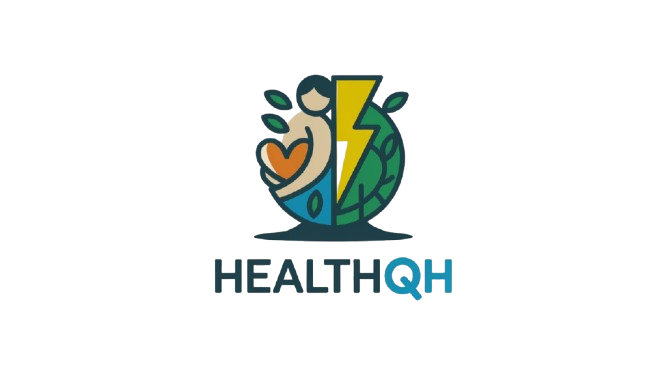If you’ve recently undergone a breast explant surgery, you’re probably wondering about how soon you can safely get back to exercising. Specifically, you might be asking yourself, “Can I use exercise bands after 2 weeks breast explant?” Returning to physical activity is an important part of recovery, but it’s essential to approach it the right way. In this article, we’ll explore everything you need to know about using exercise bands, along with safe and effective recovery practices.
Understanding the Recovery Timeline After Breast Explant Surgery
Before jumping into the specifics of using exercise bands, it’s crucial to understand the overall recovery timeline. Breast explant surgery involves removing breast implants, which can be performed for health reasons or simply personal preference. The healing journey varies for everyone, but there are some general guidelines to follow to ensure a safe recovery.
For the first 1-2 weeks, rest is absolutely essential. Your body is still in the acute phase of healing. During this time, avoiding strenuous activities is key to preventing complications. Starting from Week 2, many patients feel ready to reintroduce some light exercises, which includes gentle movement and activities that promote circulation without placing strain on the chest area.
Benefits of Exercise During Recovery After Breast Explant
Regular movement after surgery isn’t just about fitness—it’s also about boosting recovery. Gentle exercise can help prevent blood clots, reduce stiffness, and support overall physical and mental well-being. As you reintroduce exercise, consider the benefits of exercise bands: they provide low-impact resistance, which helps tone muscles and improve flexibility without overworking your healing chest area.
In the context of post-explant recovery, using resistance bands can be an effective way to maintain your physical fitness, especially focusing on lower-body and core exercises while avoiding direct strain on your chest muscles.
Precautions for Using Exercise Bands During Breast Explant Recovery
While exercise is beneficial, it’s equally important to understand the precautions that should be taken when incorporating resistance bands into your routine. When asking “Can I use exercise bands after 2 weeks breast explant?” the answer can vary depending on individual healing progress.
Avoid Chest Strain:
At this early stage, avoid exercises that involve your chest muscles. Focusing only on lower-body exercises can prevent complications such as increased swelling or disruption of healing tissues.
Listen to Your Body:
Pay close attention to how your body feels. Any signs of discomfort, pain, or swelling are indicators that you should scale back or stop entirely.
Use Light Resistance:
When first starting out, use light resistance bands to keep the intensity minimal. This allows your body to adapt and continue healing without overexertion.
Medical Considerations Before Starting with Resistance Bands
Before using exercise bands even after 2 weeks post-surgery it’s wise to consult with your surgeon. They can assess your healing progress and provide personalized advice regarding physical activity. Each person’s recovery journey is unique, so tailored recommendations are essential.
Your surgeon may also provide specific instructions about wearing supportive garments or give you insights on activities to avoid based on your surgical procedure. Having the green light from your healthcare professional is vital before any form of resistance training.
Phase 1: Early Movements Without Exercise Bands (First Two Weeks)
During the first two weeks post-surgery, your body is in the most vulnerable phase. Exercise should be minimal and focused on walking or light movement around the house to help circulation. Exercise bands should be avoided at this stage, as the chest muscles and tissue need time to heal properly.
Short Walks:
Promotes circulation and reduces the risk of blood clots.
Gentle Mobility Movements:
Gentle stretching of the lower body without involving the chest can help keep you active without overstraining the surgical area.
Phase 2: Recommended Exercises with Bands After 2 Weeks Post-Op
At around two weeks, some patients may be ready to start introducing exercise bands into their routine. The key is to start slow and focus on movements that do not involve the chest. Here are some recommended exercises to do safely:
Seated Leg Press Using Bands:
Sit on a chair or bench, loop the band around your feet, and push out with your legs. This helps tone your legs without engaging your upper body.
Ankle Resistance Exercises:
Place the band around your ankles and perform side steps or ankle lifts. These exercises target your lower body effectively.
Glute Bridges with Band:
Place a resistance band around your thighs, lie on your back, and gently lift your hips off the floor. This movement strengthens the glutes and core without placing any strain on your chest.
Remember, even in Phase 2, it’s important to listen to your body and take breaks whenever needed. The goal is to keep your body active without compromising the healing of your chest.
Signs to Watch Out for When Using Exercise Bands During Recovery
While using exercise bands can be a great way to maintain fitness during recovery, it’s essential to watch for signs that you might be overdoing it:
Swelling or Redness:
Any signs of increased swelling or redness around the chest area indicate that you should stop and consult your surgeon.
Pain or Discomfort:
Discomfort that feels more than just normal muscle fatigue is a signal to stop the activity.
Fatigue:
Feeling overly fatigued after exercise is a sign that you need to slow down and allow more time for recovery.
Long-Term Exercise Tips Post-Breast Explant Surgery
Once you have progressed past the initial weeks of recovery, you can start gradually increasing the intensity of your workouts. It’s important to:
Gradually Reintroduce Chest Exercises:
After 4-6 weeks, you may begin incorporating gentle chest exercises if cleared by your surgeon.
Avoid High-Impact Movements:
Activities like running or heavy lifting should still be avoided until you feel fully recovered and your doctor has approved these movements.
Wear a Supportive Sports Bra:
A well-fitted, supportive bra is crucial during exercise to minimize movement and provide comfort.
Frequently Asked Questions About Using Exercise Bands
1. Can I use exercise bands after 2 weeks breast explant?
Yes, you can start using exercise bands after two weeks, but only for lower-body exercises. It’s important to avoid any upper-body movements involving your chest and to consult with your surgeon before starting.
2. What exercises are safe with bands during early recovery?
Exercises like seated leg presses, ankle resistance movements, and glute bridges are all safe options. Focus on light resistance and avoid any strain on the chest area.
3. How often should I use exercise bands after breast explant?
Start with 2-3 sessions per week, focusing on low resistance and gradually building up as your body allows. Always prioritize how your body feels.
4. What are the benefits of using exercise bands during recovery?
Exercise bands help maintain muscle tone, improve circulation, and allow for gentle resistance without heavy impact, making them ideal for recovery.
5. When can I start chest exercises again?
Chest exercises can usually be reintroduced after 4-6 weeks, but always consult with your surgeon before doing so.
Conclusion
Can I use exercise bands after 2 weeks breast explant? Yes, but with caution and under proper guidance. Introducing gentle resistance exercises after two weeks can be beneficial for your recovery as long as you avoid any activities that involve the chest area. The key is to listen to your body, take it slow, and consult with your surgeon to ensure a safe recovery.
Returning to exercise after breast explant surgery requires patience, attentiveness, and a gradual approach. Using exercise bands correctly can aid in your physical recovery and support your overall well-being, but always keep in mind that recovery is personal what works for one person may not work for another. Focus on safe practices, and soon you’ll be back to enjoying the activities you love.

